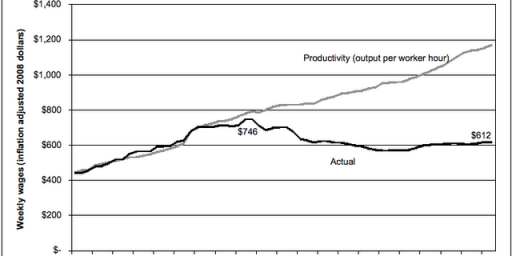Military Benefits vs Military Readiness
Without hard choices on pay and benefits, the Pentagon will have to make big cuts in readiness.
My first for War on The Rocks, “PAYING ANY PRICE: STARTING THE NEXT CHAPTER OF MILITARY COMPENSATION,” is out.
Retired Navy Admiral John C. Harvey, Jr. recently criticized the popular discourse on military compensation for under-valuing the sacrifices made by our soldiers. Harvey is quite right that “we’re not just debating about pay and allowances or commissary benefits or TRICARE fees. We are talking about the future of our All-Volunteer Force, how we will sustain it, and how it will be able to attract the kind of men and women who will repeatedly deploy into harm’s way.”
But that cuts both ways. While the sacrifices borne by those who serve are priceless, pay, allowances, benefits, training, and equipment are not. And, like it or not, the exploding health care and retirement benefits costs for the troopers of today and yesterday are going to make it harder to train, equip, and pay the troopers of tomorrow.
[…]
Personnel and overhead costs already account for nearly half the defense budget and Army Chief of Staff Ray Odierno forecasts that 80 percent will go to compensation by 2023 unless we fix the problem.
Harvey is right to fear taking away benefits that incentivize people to join and make careers of the military. But it absolutely makes sense to explore more cost-effective ways of achieving those goals.
So, for example, military base pay exploded during the last dozen years when two shooting wars made recruiting volunteers more difficult. But these increases impact not only the present, but also reverberate into the future through the retirement system. It may be that lump sum enlistment and retention bonuses would do the job at a fraction of the lifetime cost. We should almost certainly increase massively the bonus paid to those actually deployed downrange into hostile fire zones, now a paltry $225 a month, rather than pay everyone more simply for taking a theoretical risk. And, yes, we might even need to consider asking people who retire from the military at the beginning of middle age to start a second career to pay a little more for their health benefits.
We’re spending $20 billion a year on pensions for military retirees. To be sure, those who served under the promise of this benefit must be paid. But continuing to offer generous lifeline benefits to young people (as early as 38 years for enlisted personnel and 42 for officers) after twenty years of service is an expensive way to keep our best personnel. The system was put in place in an era when military pay was very low; paying half their small base pay for life was both a necessary enticement to a career of service and relatively affordable. For decades now, our troops have been compensated at a very competitive level and still earn a pension plan found nowhere in the private sector.
Harvey concludes by warning us that “Choices have consequences.” Indeed they do. Continuing down an unsustainable course out of fear of making hard choices will have the consequence of a force less prepared to fight America’s next war.
In between those excerpts are several paragraphs of detailed analysis. It’s an important debate and, sadly, one the Defense Department has recently punted on. But, as the great philosopher Geddy Lee told us years ago, if you choose not to decide,you still have made a choice.







I see the base pay of a BGen (O-7) is roughly $100K ($7919.10 monthly). An E-4 less than $24K ($1916/monthly). This problem might have something to do with the over-population of brass that I seem to recall was the subject of an earlier Original Post.
Ready for what James? More wars of choice the American people want no part of? The F35, a lemon from the get go. We could also get rid of about half of the Generals and no one would notice.
The pay and benefits today are what is needed for recruiting/retention and what is fair in return for the responsibilities that go with the job. The unaccompanied tours, combat tours, forced moves every 3 or fewer years, inability to grow equity in a home due to these forced moves. lack of opportunities for a spouse to develop a career do to these forced moves, etc. are not common attributes of most jobs.
Agree that combat pay should be adjusted.
Everyone focuses on retirement at 20 years/approx. 40 years old but they lose sight of the fact we force everyone (except generals and a few others) out at 30 years/approx. 50 years old which isn’t the best time/age for starting a new career.
Set pay and allowances at what is required for retention and recruiting of the quality and quantity of personnel we need and then set a military strategy that spells out what we can accomplish with that troop level. No more optimistic QDRs that say 2 1/2 wars, etc and that do not reflect our true capabilities.
How much of this increase in medical costs is because we’re actually rescuing soldiers from situations where historically the result was a dead body and a telegram to the relatives?
The result of war is very, very expensive. Historically we didn’t notice it because we could offload the cost on to society–a gravestone is much cheaper than lifetime medical care. Even with a parade for the survivors thrown in.
which either means we’re going to have to actually admit what war really does to the people fighting it, or not be so quick to rescue wounded soldiers.
P.S. Does anyone have an analysis of the cost of what goes towards military salaries and medical care vs. hardware? I can’t help but feel expensive hardware has a part to play in this mess as well….
@grumpy realist:
Quick point of clarification, the majority of military medical costs are for dependent/retiree care … not active duty … so war injuries probably don’t have a lot to do with adding to the overall costs.
When it comes to things like TRICARE, I’m speaking very much against my own interests, but I think cost share could definitely stand to go up. I just recently got briefed on TRICARE prime as a retiree. For myself and 7 dependents, my cost is going to be less than $50 a month. And the ridiculous thing is, some veterans even complain about that.
The retirement system on the other hand, I would argue actually has a reputation of being more “generous” than it actually is. Almost nobody is able to actually retire on a military pension.
As RM says:
Looking for a job when you’re in your mid-40s is no bed of roses. Don’t get me wrong, having a little bit of a cushion (which is really all the pension provides) is certainly nice. But to earn that money many military members have probably missed more than a few birthdays, anniversaries and field trips over the years … not to mention the fact that the “exotic vacations” which were responsible for these absences always carried a very real possibility of being “one way trips”.
In short …
If they wanted to charge me more for my dependent’s health care coverage, I’d have a real hard time finding a legitimate reason to complain about it. But any changes to retirement pensions could definitely have a negative impact on mid-career retention (IMO).
Prepared for what? The wars if choice Neo Con zealots want to pursue?
Some suicide mission for Israel?
And why? Is it salaries and pensions?
Or weapons system we don’t need or even want?
And how big a force do we need?
Defense needs to be overhauled top to bottom.
But taking it out on personnel is the wrong thing to do.
But it is the Republican way.
Servicemen and women are much healthier at 40 than they were years ago when the system was put in place. A simpler solution would be to allow longer service time. Don’t force them out because of some arbitrary number of years. I retired at 20 and am doing essentially the same work 15 years later. Could’ve/would’ve stayed on active duty instead of collecting retirement pay plus second career pay.
Of course what is happening now to the military is the same that is happening to the private and public sector workers. Promising pensions and benefits without paying for them. Tax cuts instead of paying the bills.
I’m an long ago ex-GI (USAF-4 years in, then out), so I have no dog in the pension hunt, but…I will always have a place in my heart for the enlisted personnel. Officers could have their pensions scaled back or make them pension-eligible at age 62, like Social Security because they have the education and command skills to do better in the civilian job market. What job opportunity does a battle tank gun loader have on the outside? A plain ol’ rifleman? A catapult repairman from an aircraft carrier?
Give enlisted personnel their pensions AND a great G.I. bill to boot.
P.S. Also, (after separation and if having served in a war zone) give them in-state tuition rates for college like they do for illegals.
@John425: Unless time have changed, military personnel do get to select a state for which they can qualify for in-state tuition rates (and the college at which I worked in Washington charged veterans lower than state tuition rates to boot), so I’m not sure what your comment was about other than a rant about “illegals.”
@Ron Beasley: Ah but then in lies the problem. Cut the F-35 and then a very wealthy CEO wont get a large bonus. Not to mention the cushy private sector job the high ranking officers in charge of this fiasco have lined up for when they retired.
No, that just wont do. It is one thing to put enlisted personnel on food stamps but to ask wealthy people to make any sacrifice at all, well thats just unamerican.
@jib10: Can’t argue with the reality of your comment.
For better or worse, it’s simply not true that retirement benefits and TRICARE-for-life affect the decisions of would-be recruits. Teenagers have an effective discount rate that is almost infinite; they simply do not care about the distant future, where “distant” = “more than 10 years from now”.
As noted above, the bulk of DoD medical care expenses are for people who are no longer serving, and their families, and those costs are growing even faster than in the private sector. There is no reason why those families should not pay the same copays and deductibles that those of us with really good private-sector health insurance are paying. It’s not a hardship, and it’s not an insult to their service.
The DOD budget has what, doubled in the young 21st century? I am not very impressed by cries of poverty from the pentagon. Failure to invest in our own country is a greater threat to America than any foreign enemy I see out there.
It is one thing to put enlisted personnel on food stamps and then cut food stamp programs
FTFY
Sadly, “support the troops” is a slogan for the GOP, not a policy.
The problem is that when they put in a plan to lower the retirement benefits, it has to be phased in so 10-15 years later they discover the new plan is having a negative impact on retention as happened with REDUX. Teenagers may not consider benefits but the decision to stay the course around year 10 is deeply affected by them.
Now the REDUX 10 yr mark hit at a bad time, a booming economy and right after draw down thinned the ranks. So a lot of experience mid-level members walked. If we keep electing Democrats that probably won’t be a problem. A bad economy will be norm so retention in the military will be up. It’ll be like most third world and “communist” countries.
And the problem is old soldiers. The ones today are surprisingly color-fast and slow to fade away.
@anjin-san:
Not quite. It’s actually a fairly reliable oscillation, in real dollars, with a trough of $400B/yr in between peaks of spending. It’s actually declining as a percentage of GDP.
The problem is that the latest big peak got spent on consumables, instead of being invested like previous peaks. We bought two wars, a bunch of MRAPs that we’re throwing away, a slew of failed major development programs (FCS, TSAT, Crusader, Comanche, DDG-1000, JTRS, etc. etc.), a bunch of emergency upgrades to elderly vehicles, and the most expensive program in history, the F-35, which still has a small chance of actually delivering something useful. Maybe.
So, despite the enormous outlay of dollars, the military really is in crappy shape, relative to the usual situation at the end of a peak. It’s mostly their own damn fault, but nevertheless.
@DrDaveT:
You’re saying there are glitches?
@Ron Beasley: We could certainly live with a smaller defense budget if we changed our national security posture. But you still wouldn’t want to spend the lion’s share of it on retiree pay and healthcare.
@RM: Constant moving and all the rest have been part of military service for generations. Until the early 1980s, it didn’t pay very well. Now, we pay people commensurate with the burdens and risks. But the old retirement system, which guaranteed half of one’s very small base pay for life after 20, is still in place despite the base pay being much higher.
@Todd: No, you can’t truly retire after 20 years. But it’s still a remarkable thing, indeed, to get a huge stipend for life starting at age 38 or 42. Yes, it’s a powerful incentive to stay in to 20. But there may be other, cheaper ways to do the same thing–including simply paying big re-up bonuses.
@anjin-san: There’s a lot of hand-wringing, to be sure. But the fact that personnel costs, including especially retiree costs, are eating up an increasing chunk of the budget.
@anjin-san: All of the “soldiers on food stamps” stories involve very young troops with kids. It’s hard to justify paying a 19-year-old high school graduate a salary to sustain a family.
@DrDaveT: How is it the military’s fault that they were sent to fight two long wars and had to make emergency buys on equipment? MRAPs were a response to the IED fight, which had been largely unanticipated. The F-35 is a boondoggle but buying a plane that requires invention of technologies that don’t exist when said plane is ordered to meet specifications that are beyond state of the art is expensive and inherently buggy.
@Todd: Precisely. I’m pointing out that all those health costs etc. don’t get paid out for dead soldiers. We do have (and did have) pensions for soldier’s widows, but I doubt that the amount paid out is as significant.
Dead soldiers are cheap. Retired live ones, on the other hand….
(Not that I’m saying we should be any less vigorous at rescuing and treating wounded soldiers. I’m saying that there are associated costs with the present army we didn’t historically used to have because not as many soldiers survived engagement. We also didn’t support them as much medically. Look up “soldier’s heart”. Ghastly calculus, but there it is.)
@grumpy realist:
See this
And this
@James Joyner:
In the last funding upswing due to a long war, the equipment that we developed and bought during the war had lasting utility. We used Vietnam-era systems for decades thereafter. Indeed, we are still using (or just now replacing) some of them, like the M113 family of tracked vehicles.
That didn’t happen this time, for whatever set of reasons. We up-armored existing systems until they creaked, and paid $40B for MRAPs with no future utility (and in many cases no present utility). The large contingency operations authorizations did not translate into capital assets for the future.
At the same time, the “normal” acquisition process continued to chug along, essentially unaffected by the wars’ progress (or lack thereof). The biggest procurement programs were F-22, F-18, F-35, Virginia submarines, carriers, DDG-51 destroyers, V-22, Comanche, DDX, etc. Of those, the last two were cancelled, and only the V-22 had immediate operational relevance to the wars. Research and development was worse — a large fraction of the total was going toward missile defense, Future Combat Systems, TSAT, polar weather satellites, a new amphibious vehicle for the Marines, and Littoral Combat Ship. Of those, none were directly relevant to the war effort, and none produced anything (although it might be possible to salvage LCS, and they’re trying again with the weather satellites).
So “emergency buys on equipment” is not where the money was going.